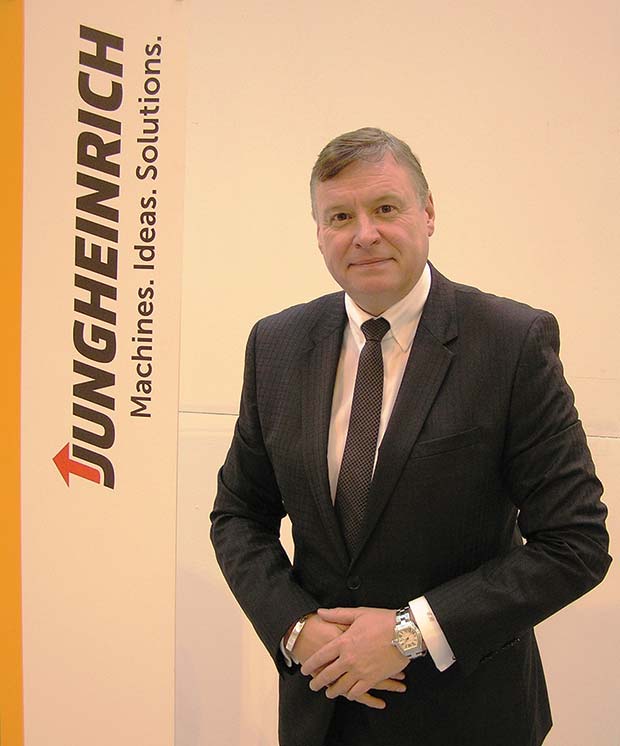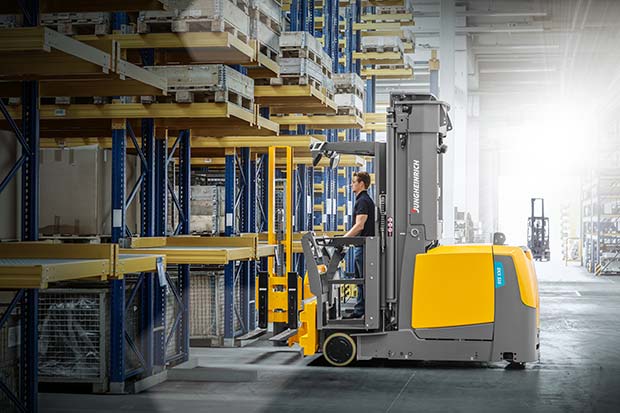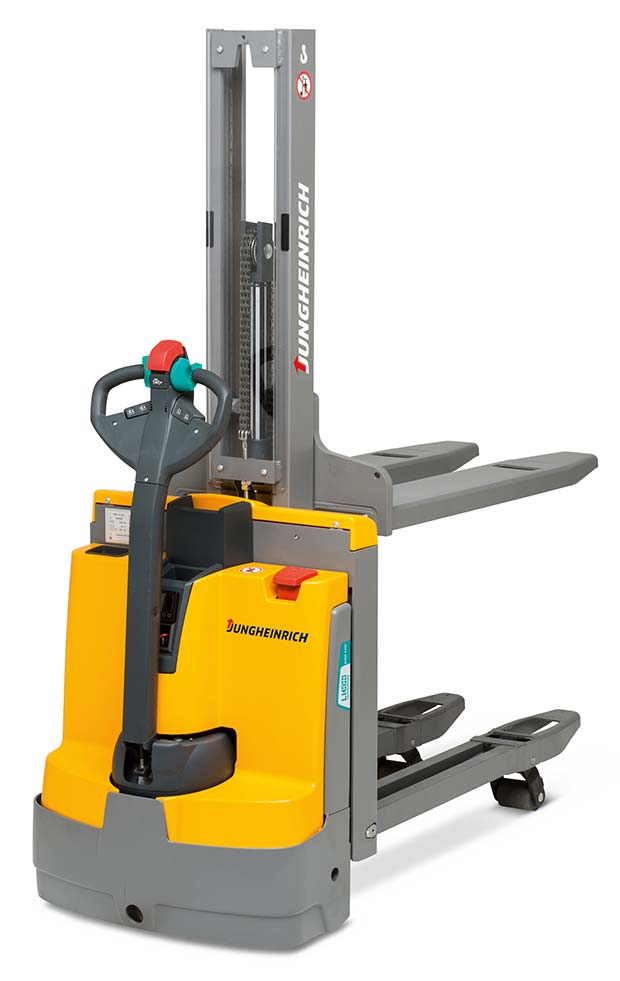As the supply chain comes under increased pressure to drive efficiencies and improve productivity, Steve Richmond, Director – Logistics Systems, Jungheinrich UK, explains how automation can help improve safety in the warehouse.

Director – Logistics Systems, Jungheinrich UK
A rapid rise in consumer expectation to deliver an omnichannel experience that seamlessly provides a faster, more efficient and accurate service has inevitably resulted in additional complexities within the warehouse. As organisations look to combine materials handling equipment with real-time information flows to meet new efficiency and productivity objectives, employee well-being has to remain a top priority.
Responsible for fulfilling a myriad of delivery types, from next day, same day or clickand- collect order, there’s no denying that the warehouse environment is becoming far more complex, with multiple operations often running from one single warehouse. These additional, ever more complicated operations are having an effect across all industries, creating an increased demand for automated solutions and hybrid systems.
Safety is and always will be a key consideration and many businesses are having to review their operations as a result, taking into consideration how increased pressure, placed on optimising the entire supply chain, directly affects the warehouse environment.
The question that businesses must ask themselves is: how can they manage a mixed-experienced workforce, respond to ever-tighter deadlines and improve accuracy to safeguard margins – without compromising safety? Ultimately, this is not and should not be an either/or situation. A holistic approach to automation that considers every aspect of operations will deliver both efficiency and employee safety.
 SAFETY THROUGH AUTOMATION
SAFETY THROUGH AUTOMATION
Increased demand combined with more complex applications are, by default, creating new safety risks within the warehouse. Stepped changes in volume or product profile, for example, can often result in extra workers in the warehouse, increasing the associated risk of collision.
However, the use of automation can minimise the number of workers required on the warehouse floor, reducing accidents and enabling these individuals to be redeployed to other, more low-risk areas of the operation.
Innovations in forklift truck technology are a crucial part of making not just the trucks but also the working environment safer. For example, digital location solutions can be used to locate industrial trucks inside the warehouse. The use of these intuitive systems offers a realtime position-based analysis of movements, which can be viewed live or retrospectively. The system can calculate a truck’s current position at all times. By analysing the resulting motion data, businesses can drive efficiencies by managing their fleets more efficiently, while also increasing the level of warehouse safety.
Research has shown that pedestrians in the warehouse are often the most likely to be harmed in the event of an incident. As such, it has become increasingly important for organisations to consider solutions that provide pedestrian detection and speed control. Onboard cameras, scanners or sensors, for instance, can be used to continuously scan for potential obstructions in a truck’s path. When an obstacle is detected and identified, the system will deliver audible and visual alerts for the driver, while automatically slowing the truck to ‘crawl’ speed or ultimately stopping the vehicle in emergency mode.
 Nowadays, trucks include numerous safety and assistance systems to help the operator identify critical situations in advance – to reduce the risk of accidents such as collisions, as well as to reduce incorrect operation. Various functions include reversing cameras with personnel detection and digital solutions such as indoor tracking, which uses sensor technology to mark particular accident black spots within the warehouse. In addition, development focussed on ergonomics can ensure fatigue free operation and maintain the health of the employees.
Nowadays, trucks include numerous safety and assistance systems to help the operator identify critical situations in advance – to reduce the risk of accidents such as collisions, as well as to reduce incorrect operation. Various functions include reversing cameras with personnel detection and digital solutions such as indoor tracking, which uses sensor technology to mark particular accident black spots within the warehouse. In addition, development focussed on ergonomics can ensure fatigue free operation and maintain the health of the employees.
It’s important that innovations in safety consider all aspects of the warehouse. Products will have a multitude of inherent safety features, as standard, but new innovations in forklift truck technology are pivotal to reducing risk and creating increasingly safer working environments.
INNOVATIONS IN BATTERY TECHNOLOGY
Research and development has long been undertaken to review the safety and energy efficiency of battery technology. As consumers and businesses alike have become more concerned with sustainability, the use of lithium-ion battery technology has seen an increased pick up over the last few years. Lithium-ion batteries have an extended life expectancy of many thousands of full cycles and a higher number of partial cycles by comparison to the average life of a lead acid battery.
State-of-the-art lithium-ion technology has revolutionised not only the efficiency of materials handling equipment but also the safety of operators and pedestrians moving through the warehouse. The virtually maintenance free lithium-ion technology eliminates the need for a second battery in the majority of applications, which removes the need for battery changes and additional battery changing equipment that can leave operators open to a greater risk of injury.
Battery performance can also be permanently monitored by innovative, integrated battery management systems. These systems allow operatives and managers to monitor usage and plan efficient charging times, it will also flag any potential errors and/ or servicing requirements, so any potential hazards can be responded to proactively.
Lithium-ion technology is taking up a position as a major development in the market, not least because of its cost effectiveness. An industry-wide focus on energy efficiency has also made the eco-friendly option attractive to customers. Furthermore, shorter charging times allow operatives the opportunity to charge during breaks, creating a more flexible working environment allowing for more commonly seen, 24/7 operations to run smoothly.
CONCLUSION
There is no doubt that safety is a key priority for all warehouse operations. Now is the time for organisations to look at advancements in intralogistics technology, not only to help drive efficiencies and optimise their operations but also utilise the technology to enhance safety for those workers on the frontline of all operations within the warehouse. While cost reduction and increased productivity will remain key drivers when it comes to the uptake of automated solutions, it is also crucial that businesses ensure that safety is a key consideration when introducing automation.
When all things are considered, organisations should be taking a ‘workforce safety’ first approach to the implementation of tools and technology that can significantly enhance performance and productivity.




Comments are closed.